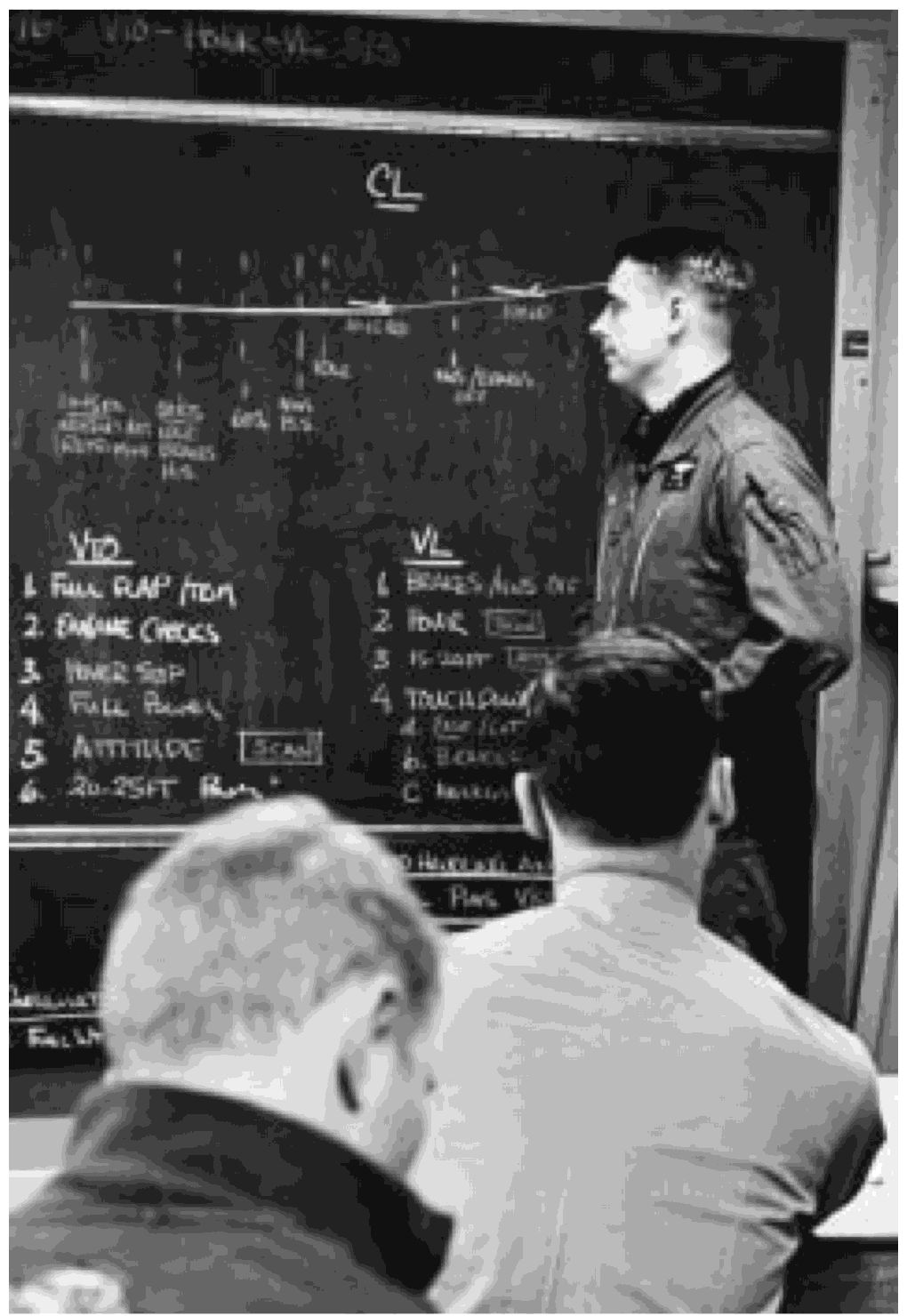
1969-Contin ued
numbers, included a grand total of 177,000 with
28,500 officers of whom 15,200 were HTA pilots.
Enlisted men numbered 147,700 of whom 27 were
pilots. Respective figures for Marine Aviation were:
72,500; 9,600; 5,600; 62,800, and 5.
14 July
The first A-7E Corsair II assigned to an
operational squadron was delivered to VA-I22, the
A-7 West Coast training squadron at NAS Lemoore,
Calif. The A-7E version of the Vought Corsair II
incorporates heads-up-display (HUD) and Project
Map Display (PMDS) whereby vital information from
flight and navigation instruments are projected into
the pilots normal field of vision, thereby permitting
him to concentrate on his mission without looking
down at instruments. Service use of this equipment
culminated a development effort of more than 15
years duration.
24 July
Apollo 11 Astronauts Neil A. Armstrong, ex-
USN, Edwin E. Aldrin, Jr., USAF, and Michael Collins,
USAF, were recovered by HS-4 off
Hornet
after the
first moon landing during which Armstrong and Aldrin
walked on the moon, 20-21 July. The first person to
set foot on the moon was a naval aviator, Neil
Armstrong.
1 August
The Naval Air Systems Command issued a
contract to Lockheed Aircraft Corporation for develop-
ment of the S-3A, a carrier based antisubmarine war-
fare plane designed for all weather operation and
equipped with modern detection and data processing
equipment. It was scheduled to replace the S-2
Tracker in the seventies.
17 August
Hurricane Camille swept into the Gulf
Coast near Gulfport, Miss., leaving many people
homeless and causing heavy property damage. Naval
Aviation performed emergency assistance and HT-8
received a letter from the president praising it for ser-
vices rendered during the disaster.
31 August
Two LC-130s of VXE-6 arrived at
McMurdo Sound, Antarctica, six weeks in advance of
the opening of Operation Deep Freeze 70. Among the
passengers were Rear Admiral David F. Welch,
Commander Naval Support Force, Antarctica, and
seven scientists.
1 September
The Naval Aviation Integrated Logistic
Support Center, Patuxent River, Md., was established
to provide intensified logistics management for Naval
Aviation.
UNITED STATES NAVAL AVIATION
1910-1995
269
8 September
As part of Project Birdseye, the Arctic
ice-survey mission initiated in March 1962 to gather
ice-flow information for the Naval Oceanographic
Office, VXN-8 provided ice surveillance for SS
Manhattan
during the ship's historic voyage from the
East Coast of the United States to Alaska through the
ice-packed Northwest Passage.
30 September
CVSG-57 was disestablished followed
by the disestablishment of CVW-lO on 28 November
and CVSG-52 on 15 December.
22 October
The Naval Air Systems Command and
the United Kingdom executed a Memorandum of
Agreement whereby the Hawker-Siddely Harrier, a
vertical take-off and landing aircraft, could be pur-
chased. A subsequent Letter of Offer covered pro-
curement of 12 aircraft with initial delivery in
January 1971. The Harrier, U.S. designation AV-8A,
was being procured for operational use by the
Marine Corps as a result of interest generated in
September 1968 when Marine Aviators Colonel
Pilots converting to the AV-8A learn new vocabulary
 |
35 |
 |